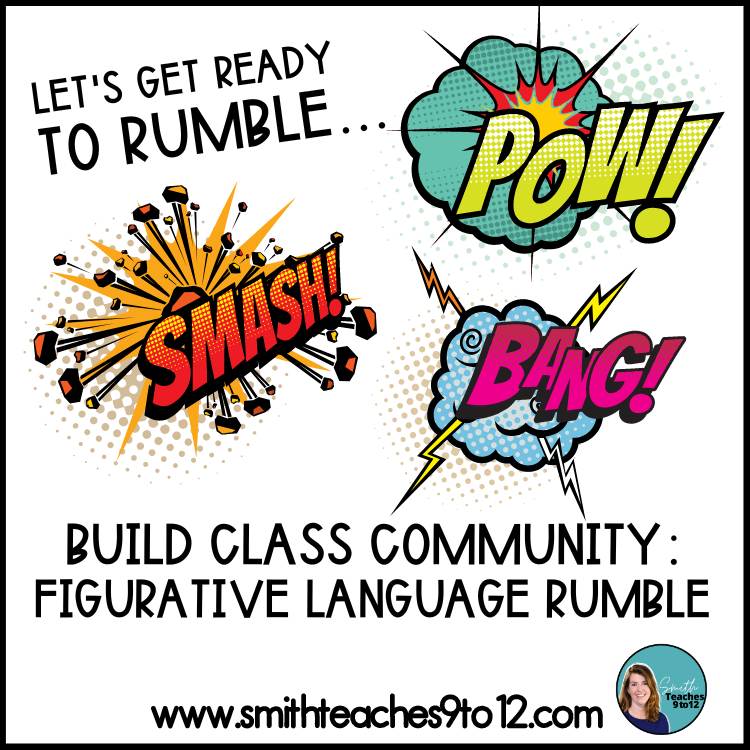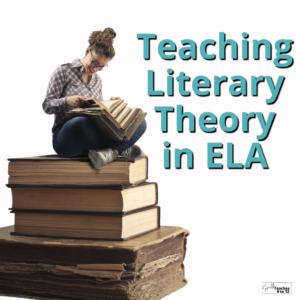Sharing is caring!
Poetry can be a challenge for the best of people so why not use the old adage that 2 brains (or more) are better than one? These three poetry activities build class community by having students work in pairs or small groups to explore, analyze, and write poetry. These ideas are perfect for short time periods or can be set-up as stations if you’re looking to fill a whole class period.
Activity 1: Collaborative Poetry
This collaborative poetry technique is based on the surrealist-created artistic technique called modified exquisite corpse. The surrealists, a cultural movement of the early-to-mid-20th-century, adapted a parlour game in the 1920s. The goal is to piece together words and/or images to create something new.
For this activity, students take turns writing lines of poetry based on a title or first line. The catch is that students don’t know what lines came before theirs. This can be accomplished by folding over the page after each student writes their line(s) and before they pass to the next student. Another option is to layer two pieces of big paper on a wall and create a gallery of poems in progress. Students then fold down the second layer to cover their newly written line(s) to keep hidden from the next contributor.

The topics of the poems can be anything under the sun. A quick brainstorm at the beginning of class usually elicits a lot of great options. If you’re looking to expose students to the writing of others then using first lines from different poems is a great way to go. (Check the FREE poetry e-book linked at the bottom of this post for suggestions of poems no matter when you’re doing this activity.)
Check out this ready-made activity for collaborative poetry in print or digital.
Activity 2: Mashups from Published Poems
Building on the collaborative poetry technique listed above is the notion of a mash-up based on already created poems. Students work together with about 3-5 poems in order to borrow lines to create a new poem. Using a guiding theme or topic can be helpful if students are struggling to start or if you’d like it to connect with the subject or text being studied in class at the moment.

For example, my students were studying Frankenstein using essential questions focused on decisions, responsibility, and consequences. To facilitate a mash-up activity to tie into the novel, give a couple of groups of students 5 poems from the same time period as the novel, give another couple of groups contemporary poems (gothic or just ‘darker’ in tone), and give a final couple of groups a mix of both. From there, using the mash-up technique, students used their selection of poems to pick out lines to fit with one of the topics from the unit’s essential questions.
To extend the lesson further, at the end of their creations groups traded their poems to examine and to analyze using a TP-CASTT or reflection questions to explore the language and imagery of the new poems.
Activity 3: Figurative Language Rumble
Another activity to build community in your English classroom is based on learning and/or reviewing figurative language devices. Once students have a familiarity with key terms, they can begin to rumble. Students in small groups collaborate to write a poem with different lines that reflect the devices they’ve just learned.

Here’s how it works:
- Ask students to write a 10 line poem.
- Each line or couplet should include one of the devices.
- For example, write a line that uses alliteration with the letter of one group member’s last name. Or write a line that uses hyperbole about a strong feeling – love or hate. Or write a couple that uses an eye rhyme. And so on.
- Each student in the group writes a line and the group decides which one to use in their poem.
- Once they’ve completed their 10 lines, students share their poems with the class.
- Do it out loud or as a gallery walk with the poems on big paper.
Check out this Pinterest Idea Pin with more info. And here’s a post with even more details to do this activity in your classroom.
Students take note of how the different devices are used since they’re all using the same guiding prompts. This helps to have students confirm their understanding of the terms in action as well.
Check out these ready-made activities to review figurative language and then complete the rumble/face-off.


For more activity ideas, check out these poetry-related posts:
Poetry Creation and Risk Taking in ELA
3 Ideas for Poetry Creation in Everyday ELA Lessons
Or click POETRY in the category near the title of this post and you’ll see all of the poetry-related posts… Poetry is a favorite of mine so there are a fair few and more will continue to be added!





One Response